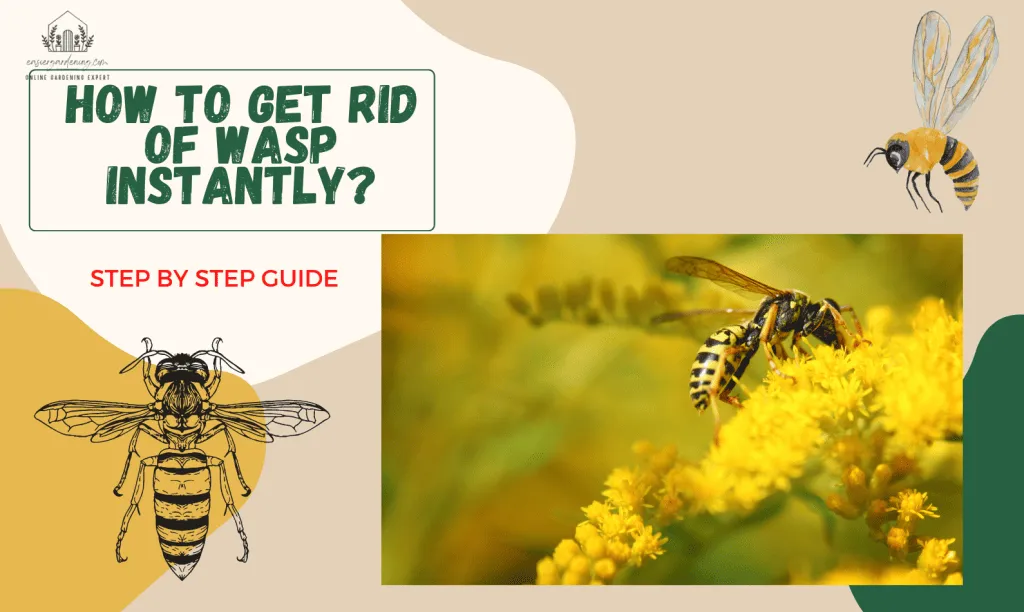What Are Tarantula Wasps
Tarantula wasps, belonging to the genus Pepsis, are large, solitary wasps known for their impressive size and distinctive appearance. These formidable insects are named for their primary prey – tarantulas. They are found in various regions, particularly in the Americas, and play a significant role in the ecosystem, though their presence can be a concern for homeowners due to their painful sting and hunting habits. Understanding these wasps is the first step in learning how to manage and eliminate them safely and effectively. Identifying them properly helps ensure you’re dealing with the right pest, leading to the most appropriate control methods. Their life cycle involves hunting and paralyzing tarantulas to serve as hosts for their larvae, which adds a unique facet to their behavior and why it is crucial to know more about them.
Identifying Tarantula Wasps
Accurately identifying tarantula wasps is vital for effective pest control and ensuring your safety. Their size, color, and behavior are key characteristics to look for when distinguishing them from other wasp species. A good understanding of what they look like and how they act will greatly help in deciding how to eliminate tarantula wasps from your property.
Appearance
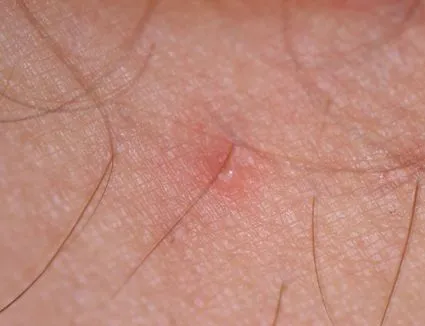
Tarantula wasps are generally large, often exceeding two inches in length. They have a striking appearance, typically featuring a metallic blue-black body and orange or reddish wings. The combination of their size and vibrant colors makes them easily recognizable. Females are generally larger than males. The presence of bright colors serves as a warning to potential predators and also helps in mating, as these characteristics are often a key factor in attracting a mate. The visual characteristics of these wasps make them one of the most recognized types of wasps.
Behavior
Tarantula wasps are solitary hunters. They are not social insects and do not build nests like yellow jackets or hornets. The females are known for their hunting prowess, actively seeking out tarantulas to paralyze and use as a host for their eggs. This hunting behavior is a defining characteristic. These wasps are most active during the warmer months, typically in late summer and early fall, and are often seen on the ground, searching for their prey. Males are primarily focused on mating. Their distinct behavior, hunting spiders and stinging defensively, requires specific methods for removal, emphasizing why a removal guide is necessary.
Why You Need to Get Rid of Tarantula Wasps
While tarantula wasps play a role in the ecosystem by controlling tarantula populations, their presence can be problematic for homeowners. The most significant concern is the potential for painful stings, as well as their impact on property and safety. It’s important to recognize the various risks associated with these wasps to fully grasp the necessity of managing and eliminating them from your surroundings. The aggressive and potentially dangerous nature of the wasp poses a significant threat, especially to those who are allergic or sensitive to insect stings, making it even more critical to handle their presence with care and prompt action.
Dangers of Tarantula Wasps
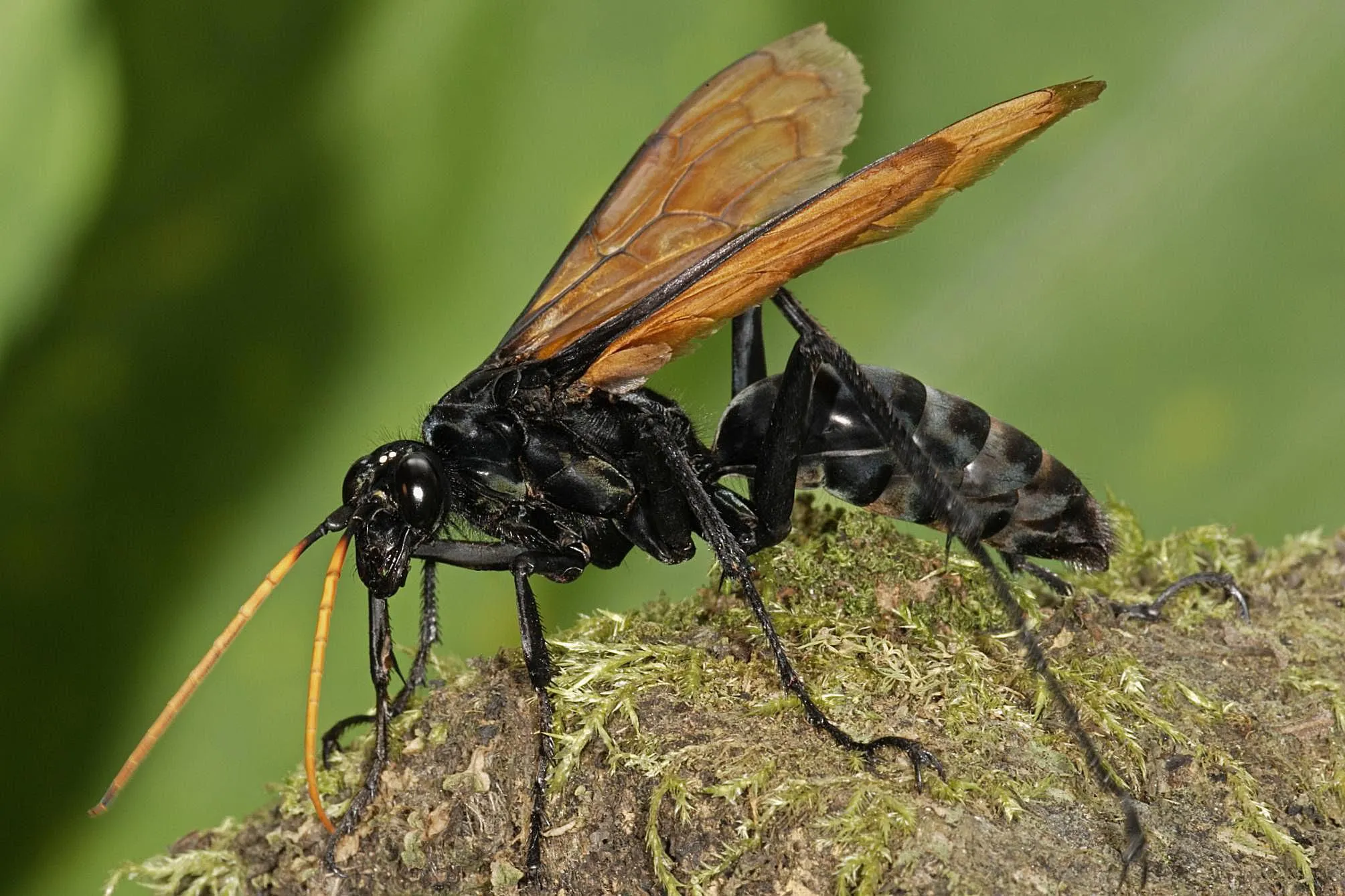
The sting of a tarantula wasp is notoriously painful, often described as one of the most excruciating insect stings in the world. The severity of the pain can last for several minutes and is accompanied by immediate pain. Though rarely fatal, the intense pain and localized reaction make these stings a significant health concern. Additionally, repeated stings, or stings for those allergic to insect venom, can lead to more severe systemic reactions, including anaphylactic shock. Proper precautions are essential to avoid contact and to know how to react in the event of a sting. The danger they pose cannot be overstated, which makes their control an essential part of protecting your home and family.
Impact on Your Property
Tarantula wasps, while not directly causing structural damage, can indirectly impact your property by their presence and hunting activities. The wasps themselves do not build nests in the same way as social wasps. However, the potential for encounters with these wasps in gardens, lawns, and near buildings increases the risk of stings and disrupts outdoor activities. The constant presence of tarantula wasps searching for their prey can be an unsettling sight. This makes it necessary to implement both methods for removal and to minimize potential attractants within your property to prevent infestations. Keeping the surrounding areas free of potential food sources for both the tarantula and the wasp reduces their presence, which improves the enjoyment of your property.
Effective Tarantula Wasp Removal Methods
Effectively removing tarantula wasps requires a strategic approach that considers safety and effectiveness. This involves a combination of professional services and DIY methods, with a focus on both immediate removal and long-term control. By understanding the different options, you can select the most appropriate and safe methods to manage these wasps around your home. It is always best to approach these methods with caution, and to always be prepared to contact the proper medical professionals, especially after being stung by one.
Professional Pest Control
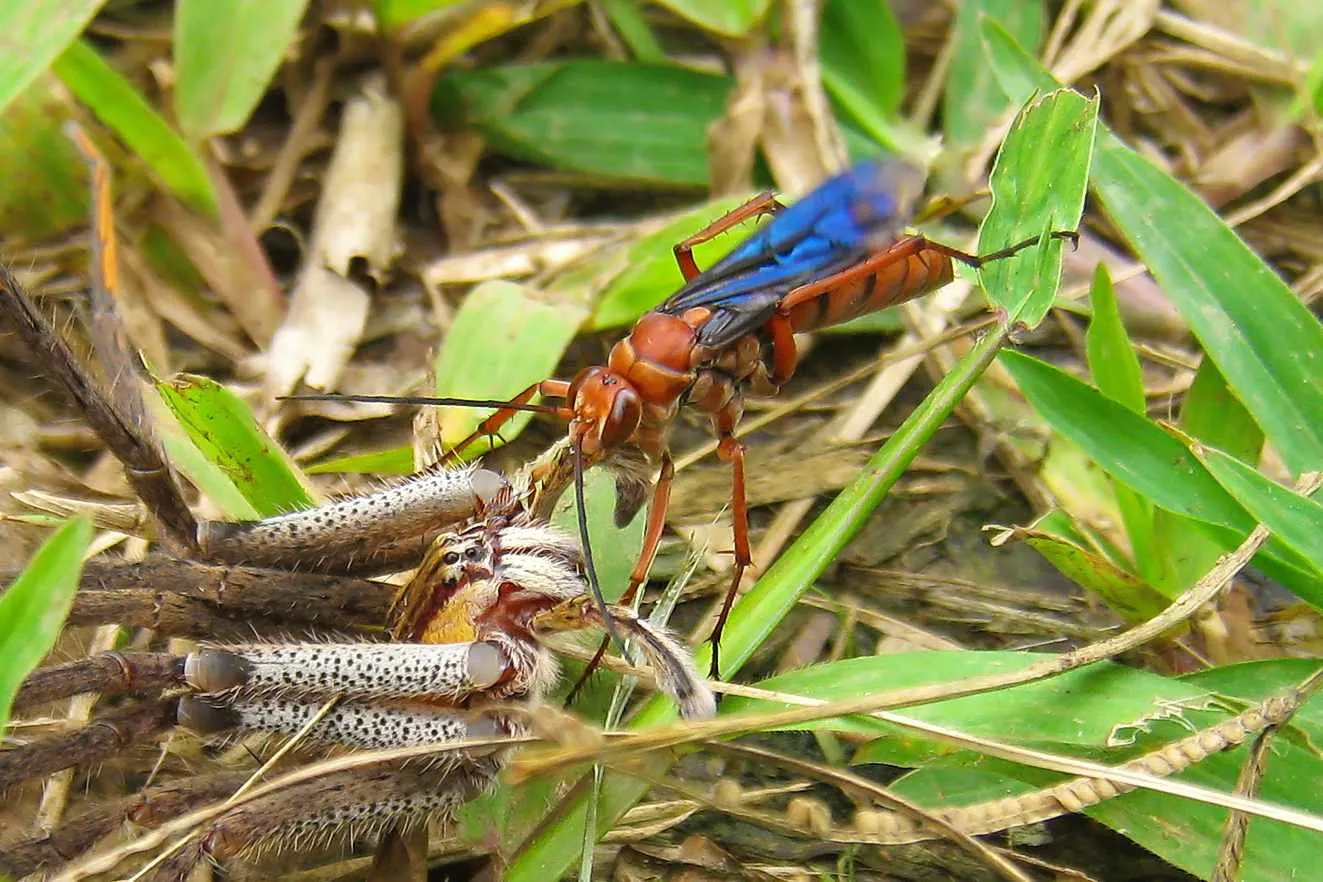
Hiring a professional pest control service is often the most effective and safest way to eliminate tarantula wasps. Professionals have the training, experience, and equipment necessary to safely handle these potentially dangerous insects. They can assess the extent of the infestation, identify the entry points, and apply appropriate insecticides in a way that minimizes risk to humans and pets. Professional services also offer ongoing monitoring and preventative treatments to reduce the chance of future infestations. The expertise of a professional pest control service helps ensure a comprehensive approach to removal, providing lasting results and peace of mind, especially in cases where the infestation is extensive or poses a significant risk to your safety and health. A professional service also makes sure that the job is done in a responsible manner, which further ensures the safety of everyone involved.
DIY Methods
If you prefer a DIY approach, several methods can help you get rid of tarantula wasps, but caution is essential. Safety should be the priority, as these wasps can deliver a painful sting. Effective DIY methods include trapping wasps, using insecticides, and taking preventative measures. Always wear protective clothing, including long sleeves, pants, gloves, and eye protection. Be prepared to retreat if necessary and do not attempt removal if you have an allergy to wasp stings or if the infestation is extensive. The key to successful DIY removal is to be proactive, informed, and careful, ensuring that you protect yourself and others around you. You can ensure you’re not dealing with a potentially dangerous situation.
Trapping Wasps
Trapping tarantula wasps can be a useful method for reducing their numbers. Commercially available wasp traps can be used, or you can create your own. Using a trap will require a specific attractant, typically a sugary liquid or bait, to lure the wasps into the trap. When they enter, they cannot escape, leading to their eventual demise. Placement of these traps should be strategic, avoiding areas where children and pets frequent. Regular monitoring is important, and you should dispose of the trapped wasps in a safe manner, preferably when wearing protective gear. Trapping is most effective when combined with other control methods, like insecticides. This proactive strategy reduces the number of wasps present and minimizes the potential for stings on your property.
Using Insecticides
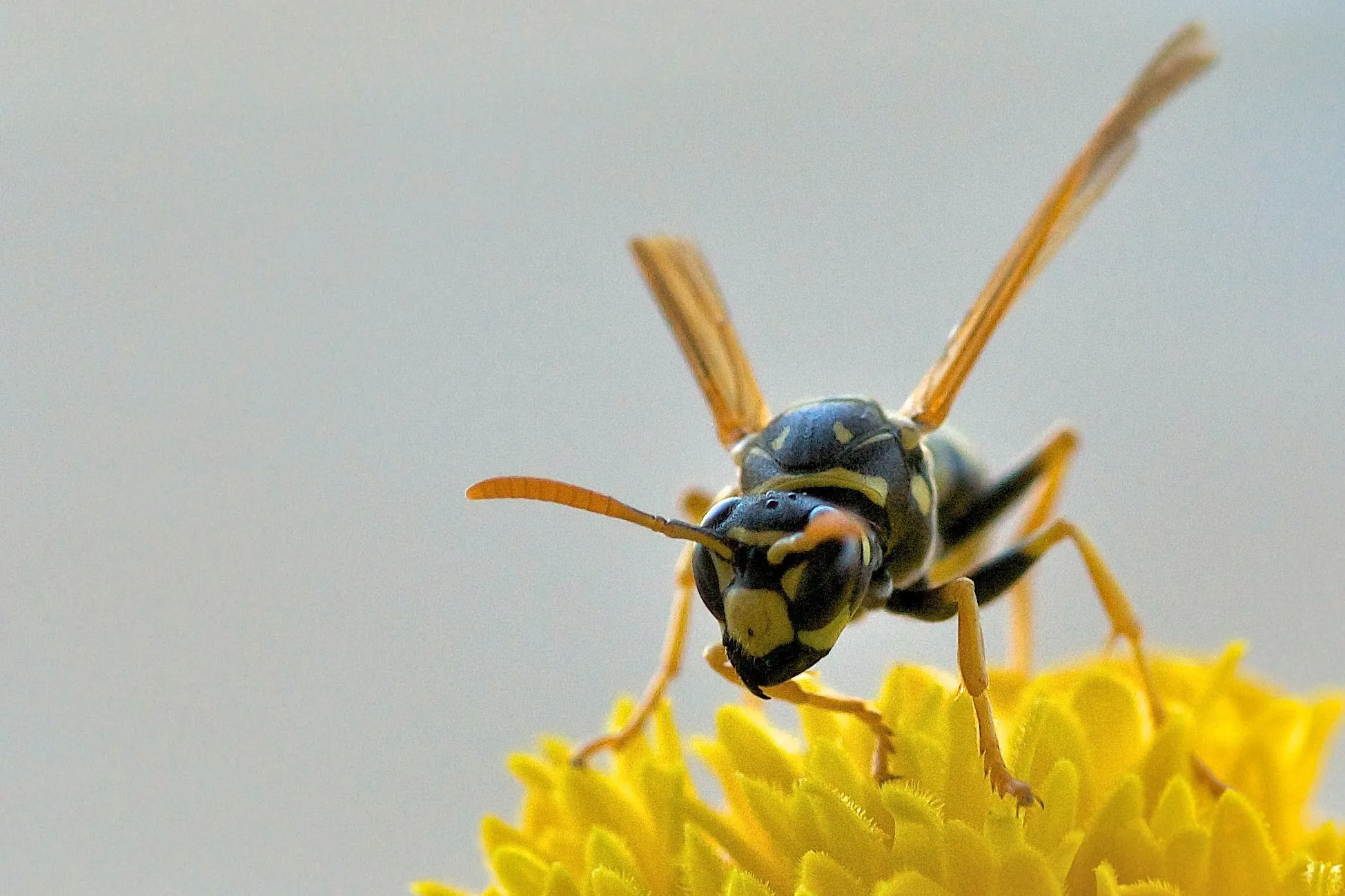
Insecticides can be used to control tarantula wasps, but proper application is important. Contact insecticides, which kill the wasps upon contact, are effective. Insecticides with residual effects can prevent future infestations. When using insecticides, always read and follow the product label instructions carefully. Wear protective gear, including gloves, eye protection, and a mask, to minimize exposure. Consider the impact on beneficial insects, and avoid applying insecticides during windy conditions. Application should be done during the cooler parts of the day, such as early morning or late evening, when the wasps are less active. This ensures the maximum effectiveness of the insecticide and reduces the risk of harm to both yourself and the environment. Insecticides used should be those recommended for wasp control, and be sure to check the label for instructions.
Preventative Measures to Keep Tarantula Wasps Away
Preventing tarantula wasps from establishing themselves on your property involves several key strategies. These strategies are focused on making your property less attractive to these wasps, thereby reducing the likelihood of them taking up residence. Implementing these preventative measures can greatly reduce the need for repeated removal efforts, creating a safer and more enjoyable outdoor environment. By proactively controlling the conditions that attract these wasps, you can greatly reduce your chances of having to take emergency measures. This includes sealing entry points, reducing food sources, and maintaining a clean yard, each of which is designed to disrupt the life cycle of the wasp.
Sealing Entry Points
Sealing potential entry points can prevent tarantula wasps from entering your home and property. Inspect your house and outbuildings for cracks and crevices and seal any found. Pay close attention to areas where utilities enter the structure, such as pipes and wires, and use caulk or sealant to close any gaps. Window and door frames should be inspected to ensure they are tightly sealed. This strategy prevents these wasps from finding a place to nest or shelter, which reduces their likelihood of setting up shop. Regular inspections and maintenance will ensure that entry points remain sealed. Regularly check the seals around your doors, windows, and utility entrances to ensure there are no openings where these wasps can gain access. This is also important for keeping out other pests.
Reducing Food Sources
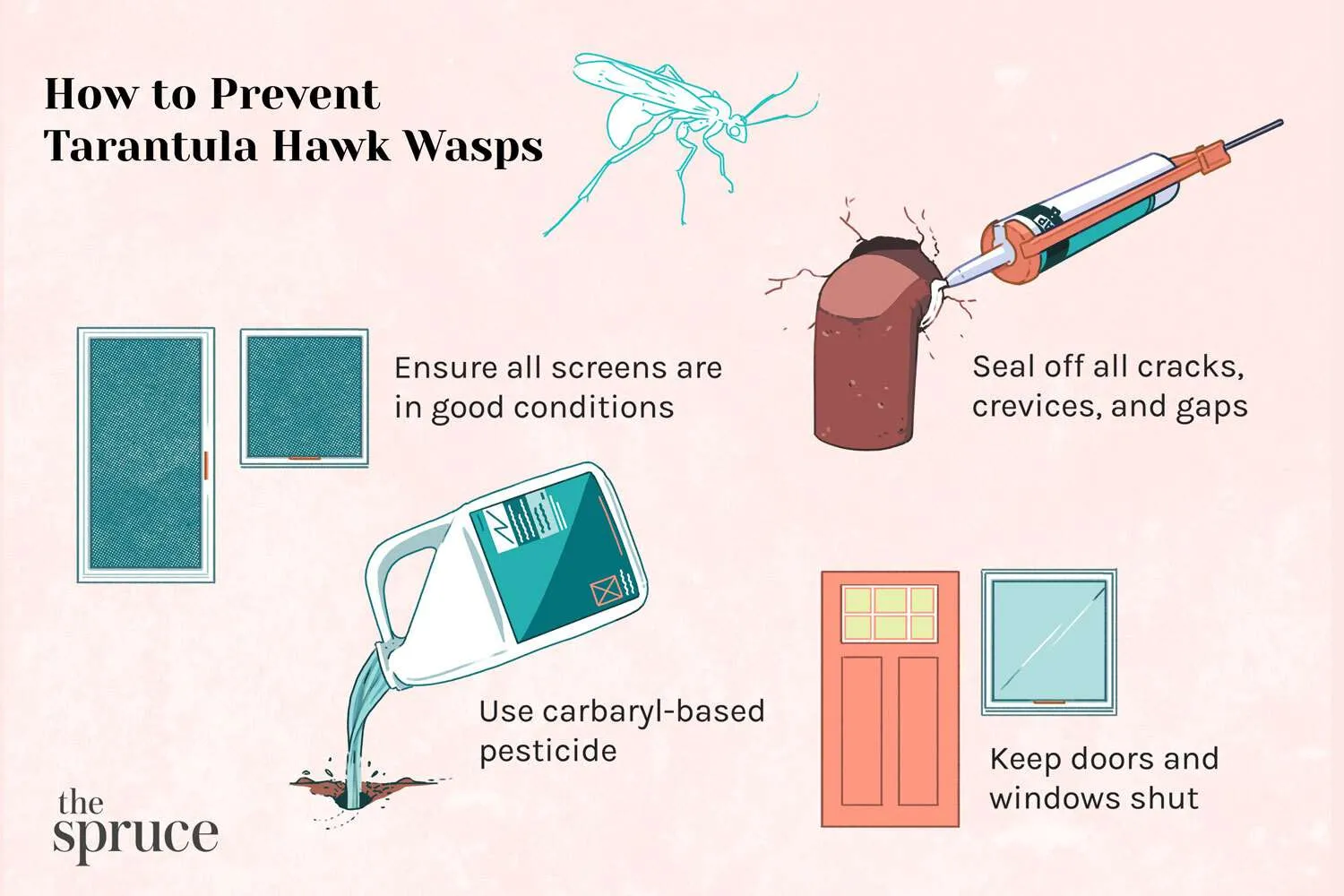
Minimizing food sources is essential to deterring tarantula wasps. They are attracted to tarantulas, so controlling the tarantula population indirectly reduces the wasp population. This can be achieved by removing areas where spiders may be found, such as dense vegetation or piles of debris. Keeping the yard clean and uncluttered reduces the number of potential habitats for their prey. Removing any spilled food or sugary substances that could attract other insects also helps, as the wasps will be drawn to areas where they can find food. Regularly cleaning up any food or liquid spills is necessary, especially outdoors. This proactive approach will make your property less attractive to these wasps and other unwanted pests.
Maintaining a Clean Yard
Maintaining a clean and well-maintained yard creates an environment less conducive to tarantula wasps. Regular mowing and trimming will help keep vegetation under control, which removes potential hiding spots for both the wasps and their prey. Removing clutter, such as piles of leaves, woodpiles, and other debris, reduces the availability of nesting sites and shelter. This will also help to keep other pests away from your property. Ensure that there are no areas where water collects, as this can attract various insects that the wasps might feed on. A clean yard is not only less attractive to tarantula wasps, but it can also improve the overall aesthetics and health of your property, promoting a healthier outdoor environment for everyone.
What to Do if Stung
Dealing with a tarantula wasp sting requires immediate action, as the pain and potential for allergic reactions can be significant. Knowing the symptoms, providing first aid, and understanding when to seek medical attention are crucial to ensuring a quick and effective response. The severity of the sting can vary, with symptoms ranging from localized pain to more serious systemic reactions. Proper handling of a sting is crucial for your safety and well-being. Being prepared and knowledgeable will help you manage the situation effectively, minimizing pain and complications. The potential dangers of this wasp’s sting mean that it should be dealt with as soon as possible.
Symptoms of a Tarantula Wasp Sting
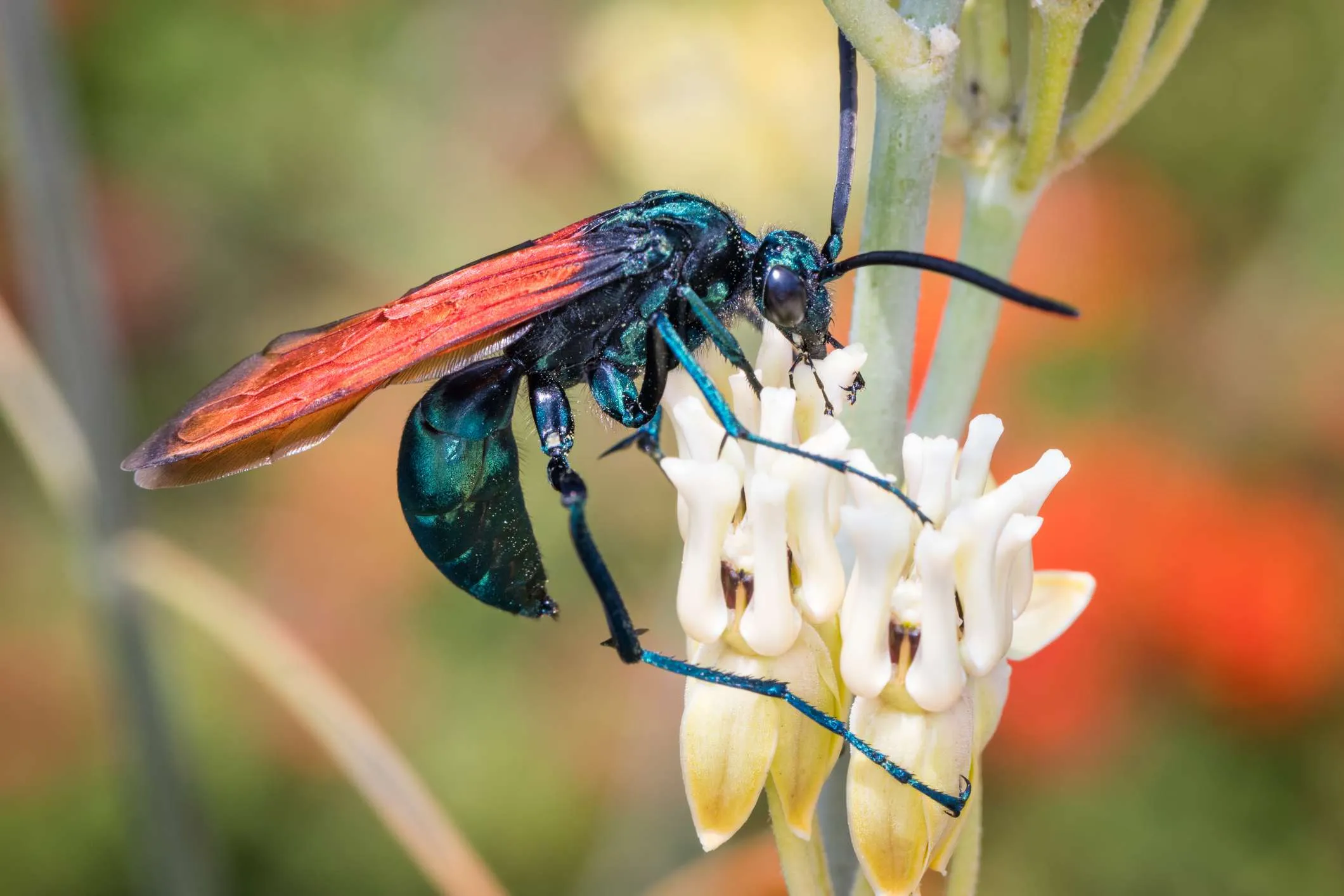
The symptoms of a tarantula wasp sting can range from mild to severe, depending on the individual and the amount of venom injected. Immediate and intense pain is the hallmark of the sting, often described as excruciating and localized to the site of the sting. The pain can last for several minutes to an hour, with the potential for swelling and redness at the sting site. Systemic symptoms, such as nausea, vomiting, or difficulty breathing, may indicate a more severe allergic reaction, requiring immediate medical attention. Knowing the potential symptoms will help you assess the severity and seek proper medical assistance. This will also help in knowing when you should seek help from the medical professionals. This is critical, especially if you know or suspect that you may have an allergy to insect stings.
First Aid Treatment
If stung by a tarantula wasp, immediate first aid is crucial. Move to a safe location away from the wasp and the area where it was found. Carefully remove any jewelry or tight clothing near the sting site, as swelling is likely. Applying an ice pack to the sting site can help reduce pain and swelling. Over-the-counter pain relievers, such as ibuprofen or acetaminophen, may help manage the pain. Monitor the person for any signs of an allergic reaction, such as difficulty breathing, hives, or swelling of the face or throat. If an allergic reaction is suspected, seek immediate medical attention. These steps will alleviate pain and discomfort while waiting for professional medical help.
When to Seek Medical Attention
Seeking medical attention is necessary in certain situations following a tarantula wasp sting. If the person experiences symptoms of a severe allergic reaction, such as difficulty breathing, swelling of the face or throat, dizziness, or loss of consciousness, call emergency services immediately. If the pain is severe or does not subside within a reasonable amount of time, consult a doctor for further treatment. If you are unsure about the severity of the reaction or if you have a history of allergies to insect stings, it is always better to err on the side of caution and seek professional medical advice. Early intervention can prevent serious complications and ensure the best possible outcome. This will help ensure a quick and safe recovery. It is also important to relay all of the information surrounding the sting to your medical professional.
